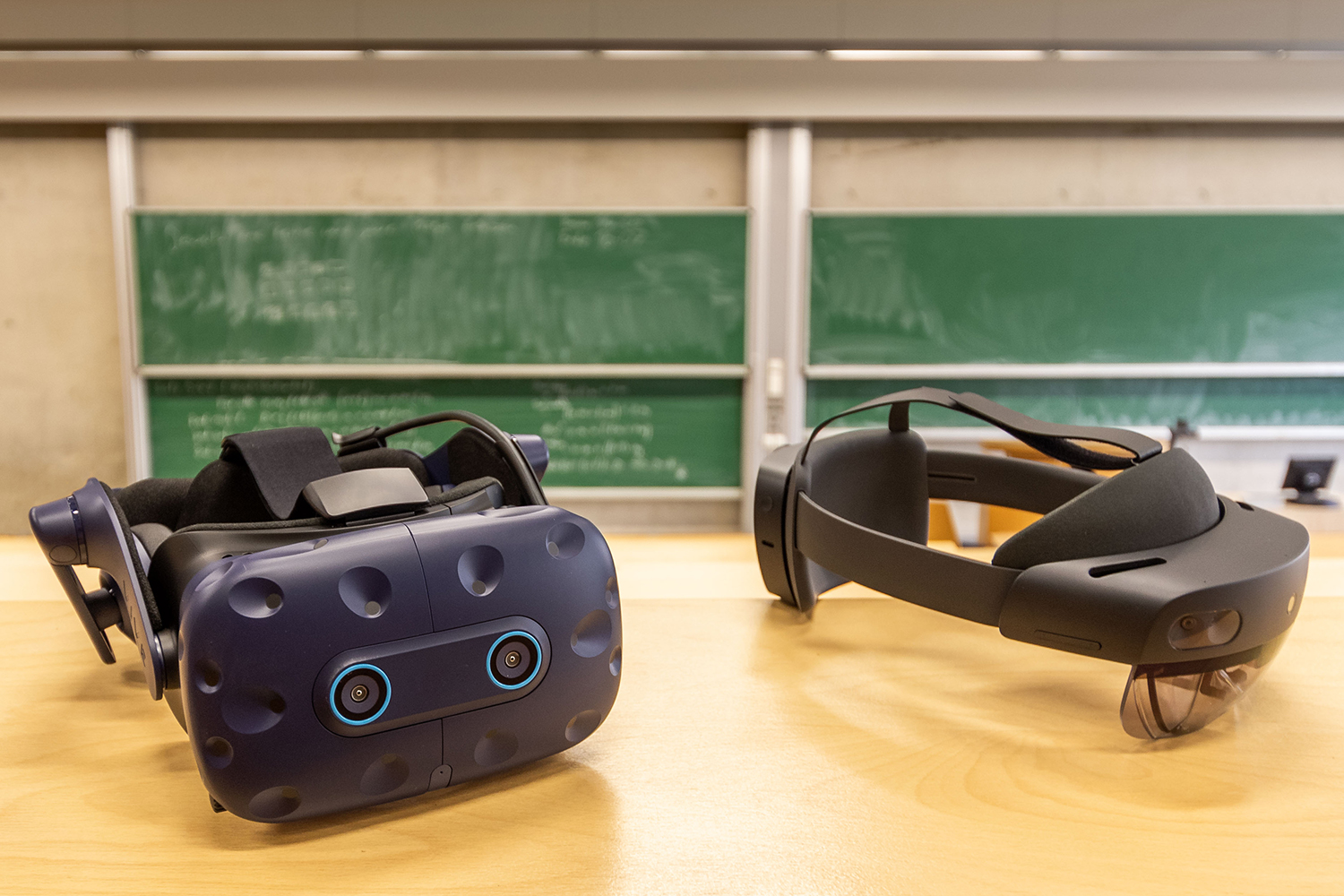Picture of the Month: Digital Immersion in Teaching From the Institute for Didactics of the Natural Sciences
Digital lectures, screencasts, collaborative working on the virtual whiteboard, student feedback via chat – the summer semester at TU Braunschweig is different. Teachers and students use new digital tools to make courses possible despite the distance. Augmented and virtual reality goggles – as seen in our picture of the month May – have already been experimented with for some time in physics teacher training.

In physics teacher training, augmented and virtual reality goggles have already been experimented with for some time. Picture credits: Markus Hörster/TU Braunschweig
Junior Professor Oliver Bodensiek from the Department of Physics and Physics Didactics uses the goggles to make the invisible visible – for example electromagnetic fields. Augmented Reality thus achieves what the English term already suggests: the actual reality is expanded by additional content such as images, information, videos or even games. The “HoloLens 2” on the right of the picture can place holograms in physical-real space. It is controlled by intuitive gestures and speech, but gaze control is also possible in some cases by means of built-in eye-tracking.
Overlay of real system and model
Augmented Reality goggles not only provide virtual insights into the inside of objects in teaching. They also enable visually guided learning, for example on experiments, machines or in surgery. In science lessons, for example, teachers can use the goggles to supplement experiments with visualizations of model predictions. The model parameters are linked to the measured data in real time. In this way, the real system behaviour and the behaviour of the associated model can be compared directly. “When optimally designed, this can, compared to other learning media, significantly reduce the cognitive load when solving associated problems and also increase the learning effectiveness. However, as far as the sensible and effective use of AR/VR in school lessons is concerned, we are still at the very beginning,” said Professor Bodensiek.
Even this is feasible: the transformation through a completely virtual space – created by human hands. This requires another learning gadget: virtual reality glasses (Vive Pro Eye, left in the photo). The field of view is at about 110° diagonally much larger than in AR applications; it is operated via a controller.
In the virtual classroom
The real world plays no role in VR. Learners can “immerse” themselves in a situation, for example visit virtual laboratories or act as a teacher in a virtual classroom where student behavior is simulated. Without really hurting themselves, dangerous or complex processes – such as working on machines or high-voltage equipment – can also be trained. A high degree of immersion and presence can be achieved, i.e. users can experience the virtual world as almost real.
In order to find out how teaching and learning environments in Augmented and Virtual Reality can be designed in a meaningful and learning-effective way, researchers at TU Braunschweig are investigating the factors that affect cognition and learning at these human-computer interfaces.
